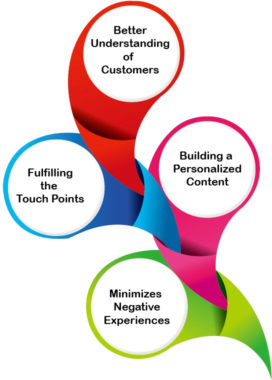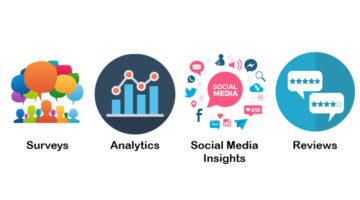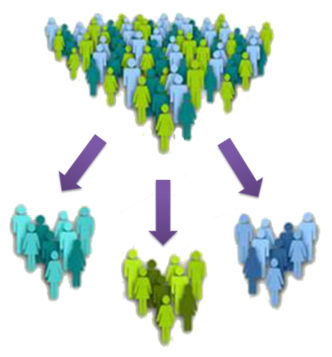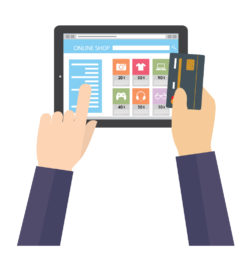About Customer Journey Mapping
About Customer Journey Mapping
Be it any type of business, the ultimate question every marketer should address is – Who are the customers that drive my business performance? Or How do I drive more business at the current acquisition rate? To get an answer to these questions lies in understanding the customer journey. In order to make a business successful, beautiful advertisements are created, mind-boggling copies are written, and user-friendly websites are made, but all these will be effective only if your prospective customers find them relevant. Customer journey mapping provides an understanding to marketers about different customers segments for the business, help visualize the marketing funnel and understand user actions that boost your business.
What is Customer Journey Mapping?
Customer journey mapping is the process of tracking and describing all the experiences customers face the moment they get in contact with your business, taking into account not only what they see, but also the reaction in their behavior to these experiences. In short, customer journey mapping tells you how your customers are treated during each contact and it further tells you how the customers may be feeling at the end of the experience.
This whole process sounds very easy but the truth is that it is a complicated process as it involves several stages to research and analyze. We often think that a customer’s journey is very simple and involves the customer entering the business’ website, and at the very end making a transaction and may come in contact with the customer-care executive if needed. But surprisingly that’s not the case in every customer’s journey. When you think about the first step – coming in contact with your business online, there are many ways a customer can approach your business, it can either be through Facebook, Twitter, referrals or search engines. A source channel can add context to user journey and hence a user’s experience will differ depending upon the channel through which they make the first contact.
Benefits of Customer Journey Mapping:
No matter how good the user experience for your business is, there might be a few experiences that are not helpful for a smooth flow of the user journey, and a customer journey map can help overcome such problems. It is useful for every department in a business, say for instance if you are a designer it helps you focus on key screens that will enhance UX, if you are a copywriter it helps you understand what is the context of the user and hence provide relevant copy according to what the customers are thinking or how they are feeling, and lastly if you are a marketer the customer journey map helps you identify opportunities to enhance the overall customers experience and move them into next stage of the marketing funnel. Some of the key objectives or say outcomes of a customer journey map would be:
Better Understanding of Customers: Customer journey map helps to think from the customer’s point of view. A good customer journey map can give a clear view of the different segments of users based on their needs for interaction. Keeping this in mind, at every stage, the business strives at delivering value to the customers. This helps in delivering customer satisfaction consistently.
Building a Personalized Connection: As a customer moves from one touchpoint to another, the map tells us what difficulty the customer is facing at each stage. For example, sending out a personalized email to users who did not complete the checkout process and abandoned their cart. With some out of box e-commerce and analytics capabilities, it is easier to deliver personalized outputs so that customer can be satisfied with the most important steps of their interaction.
Fulfilling the Touch Points: Customer journey map helps in identifying where the customer is happy and where the customer isn’t, and then gives more attention to further optimizing successful practices wherever required.
Minimizes Negative Experiences: With the help of a customer journey map, it becomes a win-win opportunity, because by engaging with the customers and solving their issues, the business can achieve operational efficiency. A customer journey map identifies where the customer seems to be more confused and deals with that area making it easier for them to conduct business.

How Customer Journey Mapping Works
The customer journey mapping process gathers data about the customer from many sources such as:
- Surveys
- Web Analytics
- Social Media Insights
- Product and Service Reviews

All this information is to be combined and analyzed to understand impactful experiences. This analysis helps identify how the interaction between the customer and your brand is moving right from the time the customer had come across your till the customer had established a relationship with your business. It’s also important that your customer journey mapping must improve the customer experience by using a few principles:
Be Emotional: Considering the customer’s emotions at every stage is crucial, as emotions play a big role in purchasing decisions. So, emotions like what the customer is thinking, how the customer is feeling and what the customer is experiencing, are all the situations to be considered.
Make it Universal: The customer journey mapping should be universal to all the customers because, at the beginning of a customer’s journey in a website, the usual flow and initial touch points are considered to be the same. After crossing the first few touch points then it is suggested to create more specific experience maps according to the persona.
Keep it simple: The customer journey mapping should be simple and easy to use. Using simple colors and fonts can help. A simple and clear customer journey map can showcase what is happening to the customers in order to solve the customers’ problems. The complex the customer journey map is the more complex it will be for understanding the touch points of the customers.

Steps involved in Customer Journey Mapping:
- Choose a certain segment and create a persona: By segregating the customers according to demographics, this will make the task easier as customers that fall in the same category usually have the same purchasing intentions. So, a persona is created for the set of people that describes their backgrounds, goals and pain points.
- Make a list of activity phases that are usually performed by the customer: The activities differ according to the type of business. For example, if you are doing an e-commerce business then the stages that you would consider are:
- Discovery: This is the moment when the customer first discovers you and your products. So, here the customer usually gets a sense for who you are and what you have to offer.
- Research: This is like “window shopping”. In this stage, the customer usually looks through all the products and decides what to purchase. The research stage might seem like a very easy stage, but this is actually where touch points come into place. Usually, high intent customers have more chances of purchasing.
- Acquisition: If this stage becomes successful then your goal is achieved, that is – this is the stage where the customer has decided what to purchase and has put it in the cart for purchasing. So, if at all the customer happens to bounce off from the website after placing their products in the cart, it is necessary to retarget the product to the customer.
- Loyalty: Well, any business’ aim just doesn’t end with an acquisition, the actual aim should be creating a sense of loyalty
3.Find out customer’s goals and touch points: Here in this stage, the customer’s goal must be figured out. After figuring out the goals, you should consider the necessary touch points. For example:
- Discovery: Friends, Social Media, TVC, etc
- Research: Website, Blogs, Vlogs, Friends, etc
- Acquisition: Website, Payment Page
- Retarget: Social Media
- Loyalty: Emails
After collecting the above-mentioned data, the next step is to pop all these points on the map and list out all the problems and respective solutions. Here’s a continuation of the above example that we used:
- Discovery & Research: Vague information, few product reviews, no uniqueness or creativity
- Acquisition: Slow site speed, no cart update option, bad payment methods, ad banners advertising other products might divert the customer’s attention, and sign-up option in order to purchase a product.
All these types of factors must be carefully identified and rectified so that you can help the bounce rate come down drastically.

So, here you go! You’re now ready to create a customer journey map all on your own. We hope you understand how useful a customer journey map is. By this, we mean that creating a customer journey map is definitely worth it because it helps to create a bond with the customer, which in turn leads the customers to become brand loyal. After all, what’s the whole point of your business when people don’t talk follow or talk about it in social media or with friends? 😉


